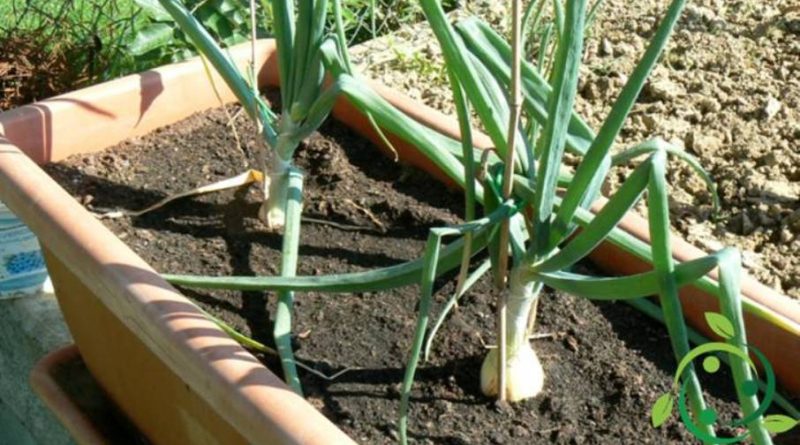How to grow potted onion
How to grow potted onion
The onion, due to its characteristics lends itself to be grown both in your small home garden and, with some tricks, even in specially prepared and sized planters.
The onion is a two-year herbaceous plant and is one of the oldest cultivated vegetables.
All the innumerable varieties of onions are suitable for cultivation in the home environment, obviously taking into account the needs of the different varieties.
For the enlargement of the bulb it is essential to take into account the photoperiod (ratio of hours of light / darkness). So the early varieties, such as the red of Tropea, the White of May and the spring onion of Lisbon, require at least 10 h – 12 h of light a day, the early middles, like the Musona, start when there are 12 h – 14 h of light, while the late ones, like the Golden one of Parma, the Red Ramata of Milan and the Borettana, start the bulbification only in the presence of 14 h – 16 h of light.
Even if it does not require exclusively loose soil it is good to grow onions with granulometries tending to medium dough and with pH between 6 and 7, while a good organic endowment gives them energy to grow (especially nitrogen) and to develop well because of the best conditions of humidity and porosity.
For the choice of the vase these must be at least 30 cm deep, possibly with good porosity (terracotta) at the base of which the expanded clay ensures excellent drainage.
For sowing, adjust according to the variety (as mentioned before) and for winter sowing, make sure that the temperatures are not too cold (so repair your pots in milder environments).
Sowing can therefore go from winter to spring following those that are indicated for the specific seed.
After a variable period (depending on the variety) of 40-80 days from sowing in seedbeds, when the young onions will have three or four leaflets, you can proceed with transplanting to home.
Proceed placing the new seedlings to 3 – 4 cm below ground, so that only 3/4 of the length of the leaves leave the substrate. It is good that the substrate where you carry out the repotting is similar to that of sowing and does not contain synthesis nitrogen but well humified organic substance.
Clearly the distance between plant and plant depends on the variety, so onions with large bulbs should be spaced more and vice versa. Therefore the distance can vary from 10 to 20 cm.
Care must always be taken to soil the soil close to the bulb to avoid the formation of mold on the surface of the substrate and on the superficial cuticles of the bulb itself.
The onion has medium water requirements, so it should be irrigated but not frequently and thinning the irrigation shifts as we approach the maturation.
for the harvest it should be remembered that the preserved onions and the borettane, after 90 days from sowing, should be ready, the other varieties, always destined to preserve or to fresh consumption, will delay a little more and you will have to decide the opportune moment for the collection by carrying out some tests.
For a better organoleptic quality, you can associate the onion with the zucchini, planted between the heads of lettuce, cutting and carrots.
Among the abiotic adversities it is recalled that it fears the frosts and the sudden drops of temperature, among those of biotic nature its bulb is at risk of virosis and fungal attacks if the substratum in which it grows is too compact and wet.
It is to be feared especially the downy mildew, which can be combated with the maceration of the bulb itself. Among the insects we remember the thrips (tiny, light-colored insects) that can be preventively prevented by never using nitrogenous fertilizers and, if it should appear, treating it with natural pesticides based on pyrethrum, garlic or chilli (which you can prepare as described elsewhere on this site).
Guido Bissanti

